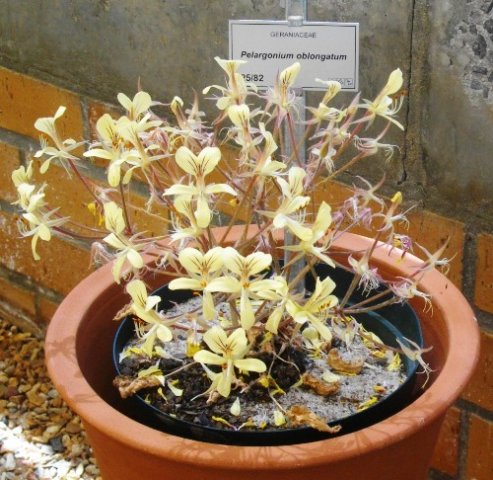Pelargonium oblongatum

Author: Ivan Lätti
Photographer: Ivan Lätti
Pelargonium oblongatum is a woody shrublet reaching from 30 cm to 45 cm in height. The brownish black tuber is oblong in shape, sometimes up to 12 cm long. This gave rise to the specific name, oblongatum.
The simple leaves grow in a basal rosette on longish petioles. The (deciduous) leaves are ovate and heart-shaped from lobes at the base. The margins are scalloped to toothed and notably hairy. The blades are aromatic and hairy with visible veins sunken on the upper surfaces. They are up to 6 cm long.
The flowering stem is often branched, up to 17 cm long. The terminal inflorescences consist of up to seven stalked flowers each. The five petals of the two-lipped corollas are yellow, butter yellow or pale yellow with dark red line markings on the upper petal pair. The lower three are narrower and unmarked, spreading at slightly more than right angles to each other. The central one of these three is the biggest, oblanceolate in shape with rounded tip. The longish upper petals are joined in their lower halves, their upper parts diverging and expanded. Their dark red markings curve out into the obliquely broadening upper parts. The filaments cohere over the flower centre, curving up near the brown, oblong anthers.
The species distribution of this South African endemic is only in the Northern Cape, from the Richtersveld to Komaggas.
The habitat is hot and arid in succulent Karoo shrubland. The habitat population is deemed of least concern early in the twenty first century (Williamson 2010; iNaturalist; www.pacificbulbsociety.org).

